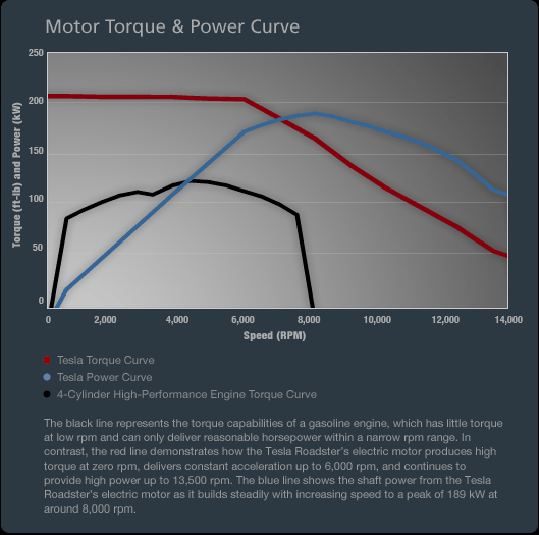Forum Discussion
valhalla360
Dec 16, 2018Navigator
jharrell wrote:
Not sure what electric motors you are looking at but this is not my understanding. An induction motor such as on a typical electric pump will pull current based on load exceeding its rated hp if needed at any rpm (perhaps tripping a breaker or overheating). The locked rotor torque and pull up torque can be much higher than rated torque in order to bring the motor up to operating speed.
I guess one issue is the case of a set speed induction motor is how hp is rated between gas and electric, gas is peak, while the electric is operating hp. A 3/4 hp electric motor may have a peak of well over 2 hp from zero to operating speed.
When you get into variable speed electric motor such as those used in cars the power band is still far superior. For instance Tesla has peak hp at 8000 rpm but produces more than 80% of peak from 6000-13,000 rpm, a 7000 rpm range that is an rpm range greater than the entire operating range of many gas engines. Hence the need for only a single speed transmission:
I did a little checking and it looks like they limit torque at higher RPM to control thermal problems. The motor could keep up the torque but it would lower life expectancy. So the drop off after 6000 rpm is electronically applied. They could have added better cooling and kept the torque up...but the car is already overpowered.
A couple of notes:
- At zero RPM, it by definition, you don't have 2hp.
- The graph is misleading as they are comparing it to a drastically less powerful gas engine. I'm guessing they used a turbo engine as most torque curves are much more rounded and will result in a wider power HP band (they left the HP off the chart...presumably to help with the misleading).
About Technical Issues
Having RV issues? Connect with others who have been in your shoes.24,191 PostsLatest Activity: Jan 19, 2025
